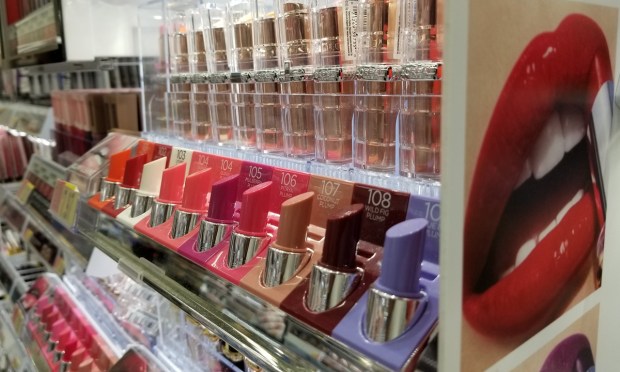How Amazon Is Transforming a Sensory-Based Industry Through Digital

Amazon is reportedly on track to surpass Walmart and emerge as the leading beauty retailer in the United States by 2025. But how is that so in an industry that particularly thrives on sensory experiences, personal interactions and physical treatments?
Although the question is reasonable, it is not entirely unconventional, given that an increasing number of beauty brands have been actively focusing on digital experiences to capture the interest and engagement of consumers who are increasingly devoting their time to online platforms.
One instance of this trend is Laneige, which has embraced the virtual realm by collaborating with Obsess, a platform for building virtual stores and creating experiential commerce.
Read more: Beauty Brand Laneige Ditches Sensory Experience for Virtual Shopping
In a similar vein, as Amazon has looked to provide consumers with a plethora of digital experiences, including livestreaming and AR try-on, Amazon’s market share is projected to reach approximately 14.5% in a potential $180 billion beauty market, with Walmart following closely at around 13%.
Read also: Does Livestream Shopping Have a Future?
Grocery retailers once dominated the U.S. beauty market with a significant 29% share. However, as consumer shopping preferences and behaviors have shifted, their influence has diminished over time. Specialty retailers such as Ulta Beauty and Sephora have been the major beneficiaries, capturing a larger portion of the market.
According to a research note from Morgan Stanley, Amazon is poised to make further advancements as it expands its presence in the eCommerce market. By 2025, it is projected to capture a substantial 46.5% share of the market.
How eCommerce Is Dominating a Sensory Industry
The rise of eCommerce and its potential to dominate sensory-based industries, such as the beauty sector, is a testament to the power of technology and shifting consumer behaviors.
Read also: In-Store Retail Purchases Threatened by Oncoming eCommerce Wave
While traditionally, the beauty industry relied heavily on physical stores for customers to experience products firsthand, the advent of eCommerce has transformed the landscape.
One of the key advantages of eCommerce is convenience. Customers can browse and purchase beauty products from the comfort of their homes, eliminating the need for physical travel and store visits.
Illustrating the convenience factor are findings from PYMNTS’ study “Tracking the Digital Payments Takeover: Catching the Coming eCommerce Wave,” created in collaboration with Amazon Web Services and drawing from an April survey of a census-balanced panel of nearly 2,700 U.S. consumers, indicate that 39% of shoppers express a high likelihood, either very or extremely likely, of augmenting their online purchases of health and beauty products in the future.
Moreover, research from the study “Changes in Grocery Shopping Habits and Perception,” for which PYMNTS surveyed more than 2,400 U.S. consumers about the factors affecting their grocery purchasing behaviors, revealed that about 50% of grocery shoppers have reduced their frequency of purchasing personal and healthcare products from physical stores in recent years. Moreover, only one-third of the respondents reported buying these products more frequently in brick-and-mortar stores compared to digital platforms.
Read more: Grocers Losing Share of Health and Beauty Sales to eCommerce
Another critical aspect is the accessibility and variety provided by eCommerce platforms. Online retailers like Amazon offer a vast array of beauty products from both established and niche brands, catering to diverse customer preferences. Through advanced search algorithms, personalized recommendations, and customer reviews, eCommerce platforms enhance the discovery process, making it easier for customers to find products that suit their needs.
Taking this into consideration, companies and merchants in various industries are harnessing technologies such as artificial intelligence (AI) to capitalize on customer-centric searches. By doing so, they can provide more personalized product recommendations and enhance the discovery process.
See also: Bloomingdale’s, thredUP Look to AI-Powered Product Attribution to Drive Sales
Moreover, technology-driven features like virtual try-on tools (VTO) and augmented reality (AR) experiences have revolutionized the way customers interact with beauty products online. AR technology allows influenced customers to virtually test makeup shades, hairstyles, and skincare effects, providing a sense of product experience that was once exclusive to physical stores. By integrating these features into their platforms, eCommerce retailers create an immersive and engaging shopping experience.
Learn more: Manicures Go Virtual With AR
Additionally, eCommerce platforms leverage customer data and AI to understand individual preferences and deliver personalized recommendations. By analyzing customer behavior and purchase history, eCommerce retailers can curate tailored product suggestions, promotions, and targeted advertising.
The rise of influencer marketing and social media has influenced the beauty industry. eCommerce platforms allow beauty influencers to showcase their expertise and recommend products to their followers. Customers are increasingly relying on these influencers for product recommendations, further driving the growth of eCommerce in the beauty sector.
Read also: How Creators Influence Brands — and Why They Listen
All in all, while sensory-based industries like beauty still benefit from physical experiences, eCommerce has demonstrated its potential to dominate by leveraging technology, convenience, accessibility, personalization, and immersive experiences. As consumer preferences continue to evolve, eCommerce platforms can expect to increase their market share, thus reshaping the landscape of the beauty industry.
Nevertheless, Walmart maintains a competitive advantage across various product categories. In the case of auto parts, for instance, it might be reasonable to prioritize a more hands-on experience compared to other spending areas.
Similarly, a comparable trend of surpassing competitors can be observed in food and beverage (grocery). According to PYMNTS data, Walmart commands a 19% share in this category, while Amazon has a mere 2%.
Read more: Amazon Trounces Walmart in Most Retail Categories — Is Health/Beauty Next?
